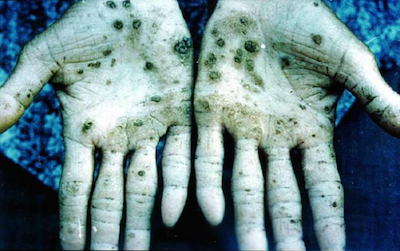



Arsenic
Avoid Arsenic
Arsenic, a shiny gray metalloid in its elemental form, occurs naturally in the Earth's crust and makes its way into soil and water supplies through ordinary weathering processes. Small amounts of Arsenic are required for normal operation of the body. However, larger doses can be fatal. Arsenic has common industrial uses, including in pesticides and wood preservatives. Through the Environmental Protection Agency, inorganic arsenic (meaning simply a form of arsenic that has not bonded with carbon) has been shown to persist in the soil for more than 45 years.Dangerous arsenic-containing insecticides that are no longer in use, such as the lead-arsenate insecticides banned in the '80s, may continue to be absorbed by crops grown on contaminated soil for decades. (It takes 45 years or more for arsenic to dissipate). Rice grown in states in the south-central region US has shown higher levels of arsenic than rice from other regions. Elevated levels of arsenic in rice from Louisiana, Mississippi, Missouri and Texas may have their origin in that region's long history of cotton cultivation, an industry that extensively utilized lead-arsenate insecticides. Another possible contributor to arsenic in farm soil is fertilizer from chickens, whose feed sometimes contains arsenic. Rice more than other grains contains higher levels of arsenic and brown rice the highest. This is from the massive absorption of water-soluble arsenic into the roots, concentrated in the hull. As grains of rice take in arsenic, they accumulate a disproportionate amount in their outer hulls, which are stripped off if the grains are refined into white rice. This is why brown rice, which has some nutritional benefits when compared with white rice, has been found to contain more arsenic.
Avoid White Rice
White rice in particular has sodium gluconate surrounding each kernel. This can cause an increase in kidney cysts. Try to switch to brown rice cooked in pressure cooker type of rice cooker. This will soften the brown rice making it easier to digest. White rice can raise blood sugar. To protect yourself from possible arsenic contamination, wash any rice before cooking in several changes of water. Limit the amount of rice eaten. Check with your city water supply for levels of arsenic in your city water. Avoid rice syrup, crackers, wine. Lundberg rice farms tests their rice repeatedly for arsenic.
White rice lacks of vitamin B1 can cause fatigue, mental retardation, indigestion.
White rice starch is highly viscous, which will increase the burden of the stomach.
White rice contains very few minerals causing damages to bodily functions.
White rice, is a highly acidic food, which makes our body very acidic.
Fiber content is extremely low.
Increases kidney cysts.
Limit Brown Rice
Brown rice because it is a whole grain is preferred to white rice. White rice contains sodium gluconate this can increase cyst growth by creating additional water around the kidney cell. Though brown rice has been found to have higher arsenic levels, rinse and wash brown rice through several changes of water to help diminish any arsenic that might be present from using chicken fertilizer on the growing of the rice. Imported rice has a lower or no arsenic content as opposed to USA grown rice which has higher arsenic levels.
Limit Brown Rice Syrup
Rice products farmed in the USA were found to have higher arsenic levels than those farmed in Asia. Limit rice products especially brown rice products, i.e. brown rice syrup. In the U.S., more than 50 percent of the rice is estimated to contain arsenic at 200 ppb, while only 10 percent of the rice in China, Pakistan, and Bangladesh is estimated to have arsenic concentrations exceeding 200 ppb. Apple juice and grape juice also had levels of arsenic, 10 parts per billion for inorganic arsenic. 12 percent of children under the age of 6 drank 16 ounces or more of juice. it turned out to be a problem with apple juice made from concentrate this concentrate increased the amount of arsenic. Consumer reports company has urged the FDA to set action levels for other juices, such as pear and grape, where tests have found inorganic arsenic levels much higher than 10 ppb.
One way arsenic might enter the food supply is through the use of arsenic-based drugs in feed given to chickens, turkeys, and pigs to prevent disease and promote growth. These are leached into the soil and remain for at least 45 years. The FDA has removed 3 of the 4 arsenic drugs used and the FDA is still evaluating the only remaining arsenic-based animal drug, nitarsone, which is approved for use in turkeys and chickens. The FDA found elevated levels of arsenic in beer after testing 65 samples, all of which the agency says included some form of rice as an ingredient. The results showed that 10 of them contained inorganic arsenic levels that ranged from 15 ppb to 26 ppb, significantly more than the federal drinking-water limit of 10 ppb for the total arsenic present.
